Vince Darcangelo's Blog, page 17
October 18, 2012
Unsettling Chapters: Maynard
There are many ways to unsettle the reader. There is shock, revulsion, introspect,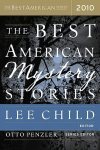 subversion. But don’t forget subtlety. After all, I would imagine the slow constriction of the noose is the more terrifying than the drop.
subversion. But don’t forget subtlety. After all, I would imagine the slow constriction of the noose is the more terrifying than the drop.
Toward that end, three key elements of great horror are atmosphere, dissonance and distress. All three are manipulated to great effect in Mary Stewart Atwell’s short story, “Maynard,” which ran in the Alaska Quarterly Review and was honored in The Best American Mystery Stories 2010.
There is elusiveness in this piece that sets the reader on edge. The story is presented in a segmented style, and the core mysteries at the beginning remain mysteries at the end. There is such a tangle of loose threads that the story is unsettling to the reader long after the final words have been read.
Specifically, it is the narrator’s murky backstory that fuels the tension. She is on the run from someone who, as far as we can tell, was holding her against her will. He will find her, though, she is certain, but will we ever learn the full nature of her distress?
This is the foundation on which Atwell builds a dark, disturbing portrait of a troubled woman on the run. One of the building blocks she uses to great effect is atmosphere. Set in the rural south, Atwell colors her world with the imagery of backwoods America, a working-class dystopia of failure where methamphetamine and lawlessness run rampant. Into this world enters the narrator—whose name may or may not be Ashley.
She has three secrets she must keep hidden: her history, her whereabouts, the child to which she is about to give birth. The latter tweaks the reader’s anxiety like a shot of bathtub meth. The narrator is unequipped to care for the child, but what is she to do? She would reveal too much of herself if she put it up for adoption, so she disposes of the baby, which sets in motion the events that lead to her final confrontation.
Finally, there is the dissonance that makes the story so unsettling. The reader is unable to connect all the loose threads, and there are missing links in the chain of events that we are compelled to reconcile.
In the end, that reconciliation must come from the reader’s own mind. I discussed this 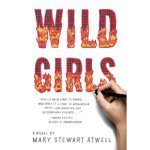 story with a fellow reader long after reading, and have thought about it often since then. There are hints at great horror in this story, which is more powerful than if we knew every gruesome detail of our narrator’s story.
story with a fellow reader long after reading, and have thought about it often since then. There are hints at great horror in this story, which is more powerful than if we knew every gruesome detail of our narrator’s story.
It lends a haunting quality that resonates through amazing lines like: “‘Ashley,’ he said. ‘Please. Don’t do this.’ But Ashley is not my name.”
Stories like this earned Atwell a deal for a full-length. Her debut novel, Wild Girls, was published on Oct. 16.


October 17, 2012
Unsettling Chapters: The Wasp Factory
Welcome to The Wasp Factory, where by the age of 16 Frank Cauldhame has already killed three children, including his younger brother. These days the teenager passes his time kill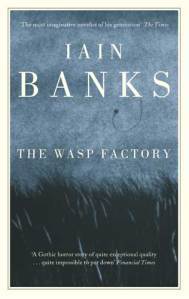 ing animals on the tiny British island he shares with his father.
ing animals on the tiny British island he shares with his father.
Other favorite activities? Long walks on the beach, going to punk-rock shows with his drunken dwarf buddy, Jamie, and gathering wasps in his elaborately engineered torture chamber.
This 1984 debut from Scottish writer Iain Banks stirred up a mess of controversy when it was initially released, and remains a dark and twisted read nearly a quarter century later.
Another great example of effective first-person POV, the narrator’s tale disorients and disturbs. No doubt, this is one of the greatest works of transgressive fiction I’ve ever read.
Like most works of suspense, the terror comes from what may happen rather than what actually happens. In this case, the novel’s tension — and greatest literary device – is Frank’s sadistic older brother, Eric.
Throughout the book, Eric, who has just escaped from a mental hospital, calls his younger brother from pay phones, each time closer to home, each time more psychotic, threatening to kill Frank upon his return. It’s a classic example of the shadow figure. We have a  serial killer narrator, and he’s not even the craziest member of the cast!
serial killer narrator, and he’s not even the craziest member of the cast!
Or is he…? The tension builds to a violent climax with a shocking twist that reframes the entire story. It’s the kind of ending that makes you want to go back to the beginning and read it all over again.
Parts of this post are adapted from an earlier article of mine, “Thirteen horrifying reads for Halloween,” which appeared in the Boulder Camera in 2008.


October 16, 2012
Unsettling Chapters: Night Shift
Of course, no list of Halloween reads would be complete without an entry from the master of horror, Stephen King. In recent years, he has produced mo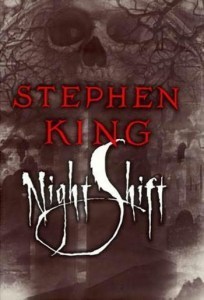 re fantastic literature than true horror. He has also plumbed a deeper emotional depth in recent works, such as Lisey’s Story and Duma Key.
re fantastic literature than true horror. He has also plumbed a deeper emotional depth in recent works, such as Lisey’s Story and Duma Key.
As great as these novels are, for pure chills, there’s no beating King’s early work. To get maximum bang for your October buck, revisit King’s first short-story collection, 1978′s Night Shift.
This is King at his most ruthless, featuring some of his darkest material, such as one of his forgotten treasures, “One for the Road.” Set amid the backdrop of a blizzard, a wife and daughter are stranded in a snow bank. With connections to Jerusalem’s Lot, they learn that the elements are the least of their fears.
“I Am the Doorway” is the creepy account of a retired astronaut who learned he was not alone in deep space — and he brought back a souvenir that just might drive him mad.
Some of King’s best-known works are in this collection as well: “Children of the Corn,” “Trucks” (which became the film “Maximum Overdrive”) and “The Lawnmower Man.”
My favorite fright is “Sometimes They Come Back,” an epic homage to childhood trauma and a reminder that, no matter how many years may pass, our demons are never far behind.
Of course, this is only King’s first entry in Unsettling Chapters. We will certainly see more of the master in future installments.
Parts of this post are adapted from an earlier article of mine, “Thirteen horrifying reads for Halloween,” which appeared in the Boulder Camera in 2008.


October 15, 2012
Unsettling Chapters: Darkness Peering
Alice Blanchard‘s 1999 crime novel, Darkness Peering, is one of the most promising debuts ever — a mind-bending psychological thriller set in rural Maine (classic Stephen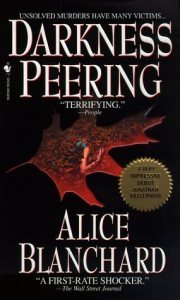 King country).
King country).
Detective Rachel Storrow is still haunted by an 18-year-old unsolved murder that happened when she was a child, and a recent disappearance has brought that case back to the forefront. For Storrow, the killer might be closer than she thinks.
Featuring a gripping and poetic opening chapter, Blanchard takes hold of the reader’s throat and never lets go.
It’s also a surprisingly literary work. Underlying the horror is a tale of family drama, small-town suspicion and the secrets we bury with the dead.
Blanchard takes on similar themes in later books, like The Breathtaker and Life Sentences. Her short-story collection, The Stuntman’s Daughter, won the Katherine Anne Porter Prize in 1996.
But of all her works, my favorite remains Darkness Peering. This book is a perfect match for a stormy October night.


October 14, 2012
Unsettling Chapters: Lolita
When I think of what was controversial in the 1950s, I think of Elvis being filmed from the waist up. So, I went into Lolita thinking it couldn’t possibly be as scandalous as advertised nearly six decades later.
Wrong. Lolita makes To Catch a Predator seem like child’s play (so to speak). As oddly hilarious as it is disturbing, Nabakov’s classic is one of the most insightful accounts of pathology (what many refer to as Humbert’s unreliability) I’ve ever encountered, and still has the power to make the most hardened reader (i.e. me) queasy.
Reading this through the lens of a literary representation of mental illness, it’s easy to see Humbert’s source for pedophilia — his stunted sexuality from an age-appropriate childhood romance left unconsummated and forever associated with death and loss (and run-on sentences).
More subtle, though, is Humbert’s troubled conscience, which vacillates between self-awareness and self-fulfillment. Through carefully dropped hints, we realize that he is aware of Dolores’ vulnerability and her lack of interest in their adult activities. He knows what he’s doing is damaging the poor girl, but more often than not, his needs hijack his decisions.
The consequences fall squarely on the not-so-frail shoulders of 12-year-old Dolores Haze, who endures his abuse into her teen years. (Side note: Through Lolita, Nabokov paints a clear portrait of borderline personality disorder, which makes her story even more tragic.)
Still, through Humbert’s rationalizations, however twisted or self-serving, he does try to protect his stepdaughter in his own clumsy way. While his selfishness trumps all, his moments of lucid affection make him as close to sympathetic as can be (sympathetic enough that we’re rooting for him in his showdown with creepy Quilty).
What a tremendous book, and perhaps the greatest work of transgressive fiction. Nabakov’s play with language is remarkable (especially considering English was his second tongue), and the pain and desperation sweating through the pages of this novel make it timeless.
Troubling, complicated and a work of genius, this is an unsettling read for the ages.


October 13, 2012
Unsettling Chapters: The Keep
Most books inspire me to write, either because, “Damn, that book was so good, I want to do that, too,” or “Damn, I could do waaay better than that.”
Then there are books like Jennifer Egan’s The Keep, which make we want to give up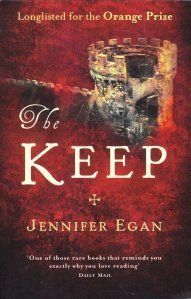 writing because nothing I could ever produce would come close to the genius of this book. The Keep has more levels than Scientology, and I was awed by the way Egan manages complex storylines and plot points.
writing because nothing I could ever produce would come close to the genius of this book. The Keep has more levels than Scientology, and I was awed by the way Egan manages complex storylines and plot points.
The Keep begins as a gothic horror novel with a literary bent ala Joyce Carol Oates or Edgar Allan Poe. But soon, we learn that it’s a story-within-a-story. The primary storyline is actually the product of an inmate in a prison writing group (or is it more real than that?).
I often find metafiction horribly pretentious, but in Egan’s hands this device achieves a deeper complexity of character. The “fictional” tale is almost a confession, or at least catharthis, and the way the two narratives play off each other creates unbearable tension.
Finally, Egan includes a third narrative that completes the cycle of co-dependency that runs through the novel. Ultimately, this is a story of identity, exploration and imprisonment. What is real or not real doesn’t matter much. The question to answer is: What do we do with the demons that haunt us?
Or rather, Where do we keep them?
The best part is that Egan leaves these questions (and these narratives) half answered. There are no neat, tidy endings. No sunsets, no profound philosophical conclusions. There are only troubled, complex people in turn confronting and running from their ghosts.
For a book with so much surrealism, the lack of resolution at the finish gives it a stunning verisimilitude: Did we really believe we could ever completely outrun our ghosts?
At the end, I wanted the story to go on and on, which is the magic of any great novel. It leaves you imagining the characters as real people and you want to know how they turn out.
I was also left wanting for a map to figure out how Egan navigated the dark, twisting corridors of this complex, yet refreshingly enjoyable novel. Mark this down as a “must-read.”
Interestingly, there is a film version in the works. I’m not sure the narrative will hold up because of the limitations of cinema, but it will be worth a look. Just be sure to read the book first.


October 12, 2012
Unsettling Chapters: Joyce Carol Oates
Nobody does literary horror better than Joyce Carol Oates, and nowhere is the fear more palpable than in her 1994 collection of psychological terror, Haunted: Tales of the Grotesque.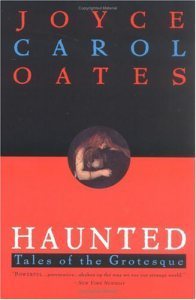
Among the unrelenting terrors:
The title story, in which a woman recalls a haunted farmhouse from her youth, where she and her friend encounter something much more sinister than a ghost.
“Don’t You Trust Me?” an unsettling account of an illegal and controversial medical procedure — and the exploitation it brings.
And the disturbing “Extenuating Circumstances” is a mother’s confessional that reveals its excruciating conclusion like a mummy unwrapping its bandages (think David Foster Wallace’s “Incarnations of a Burned Child”).
This collection is also packed with signature Oates violence and revenge, and the tale of a macabre grocery store as discomforting as flakes of glass beneath the skin.
Diehards should also read the sequel, The Collector of Hearts: New Tales of the Grotesque, which has its moments, but doesn’t stand up to the original. The book starts strong, with the Twilight Zone-ish “The Sky Blue Ball,” which I think I devoured in a single breath. Haunting and mysterious, this one’s got a Creep Factor of 10.
strong, with the Twilight Zone-ish “The Sky Blue Ball,” which I think I devoured in a single breath. Haunting and mysterious, this one’s got a Creep Factor of 10.
She hits this high note again with the title story, a classic bit of Oates’ caught-in-the-spiderweb nightmare. From the start, we can guess the fate of our protagonist. And we ache throughout the piece, hoping it goes the other way.
Some of her other collections include The Female of the Species: Tales of Mystery and Suspense, a collection of short stories about female killers, and The Museum of Dr. Moses.
And fear not, fans of Joyce Carol Oates: We’re not through with the author just yet. We have another Oates entry planned closer to Halloween.
Parts of this post are adapted from an earlier article of mine, “Thirteen horrifying reads for Halloween,” which appeared in the Boulder Camera in 2008.


October 11, 2012
Unsettling Chapters: Ian McEwan
This feature is dedicated to dark, existential works that disturb the reader’s foundation. For me, this is atmospheric writing with human monsters rather than otherworldly—that explore the darkness within rather than without.
So who better to feature, of course, than Ian McEwan.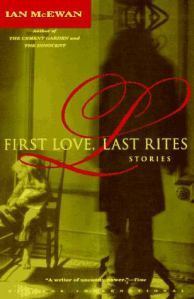
McEwan was an early influence of mine, bringing a smart, lyrical sensibility to stories of depravity and darkness. He’s better known these days for his more subdued novels, but in the early days he was known for producing a twisted brand of literary dysfunction. None so dark as the offerings in his first collection of short stories, First Love, Last Rites, in particular its disturbing opening tale, “Homemade.”
It’s a touching tale of sex-crazed adolescence and a boy determined to lose his virginity. Worried he won’t be very good in bed, and that the woman he desires would lose interest, he decides to practice on his younger sister.
OK, those who haven’t read this story might think there should have been a “spoiler alert” before that last part. But what makes this story most disturbing is not the horror of the act of incest and sexual manipulation of a minor. It’s the ease with which McEwan spins the yarn—or rather the ease with which the reader assumes the voice of the narrator.
I have read this story a few times and tried to understand what makes it so troublesome, and I believe it comes down to these five elements:
Strong narration. “Homecoming” is told from the perspective of its “monster,” and this is a great example of the power of first-person narrative. With a third-person POV, it’s easy to dismiss a child rapist as a villain. But, as with much of Poe’s writing, it’s much harder to dismiss the character when you’re inside their head. The brother follows a “logical” thought process, slowly luring the reader deeper into his psychosis.
Passivity. The narrator is not the seeker of forbidden pleasures—at first. It is the narrator’s best friend who introduces him to alcohol, cigarettes, shoplifting, masturbation and, ultimately, the race toward sexual initiation that inspires him to rape his sister. He appears to be a relatively innocent and endearing kid—this is McEwan’s trap.
Normalcy. McEwan is the master at presenting the abnormal as normal, and treating evil as a continuum rather than a separate reality. He walks us through the psychological process of a regular teenager who devolves to the point that he commits incest. What makes the horror so disturbing is that it actually makes sense! (At least in the world the narrator devises.)
Unflinching. To quote Akira Kurosawa: “The role of the artist is to not look away.” McEwan never flinches as he guides us step by step through the seduction of Connie, the sister, first through childhood games and finally through play-acting “Mummies and Daddies.” It’s a very, very difficult read. Expect to do a lot of cringing.
Inevitability. There is no neck-bending reveal in “Homemade.” The narrator declares his intentions nine pages from the end, and the power of the ending is not its surprise but its inevitability. Of course it ended this way. It had to. The worst is that we’re left with no resolution, only the realization that the characters are now stuck in this world where this awful thing happened. Now what?
And isn’t that the way all unsettling fiction ends? Now what? It’s not death that’s scary. It’s the life that follows. It’s the existential anguish that cries, “How can I go on living after this?”
And this is why I’m such a fan of dark fiction. Don’t give me vapid redemption. Give me Sartre. Give me Camus. Give me Dostoyevsky. Give me McEwan. These are authors bold enough to look honestly at the world, to explore its shadowy corners, and rather than redemption, leave us with the burden of irredeemable lives. (Another great example is McEwan’s marvelous Atonement.)
“Homecoming” is one of McEwan’s many forays into incest. There was his debut novel, The Cement Garden, and much of his early work revolves around violation, usually sexual in nature (The Innocent, The Comfort of Strangers).
I highly recommend all of McEwan’s early work, but for chills on the back of your neck (and queasiness in the tummy), you can’t go wrong with “Homecoming.”


October 10, 2012
Unsettling Chapters: A Dirty Job
OK, we’ve featured some dark selections these first couple weeks of Unsettling Chapters, and even darker territory remains. 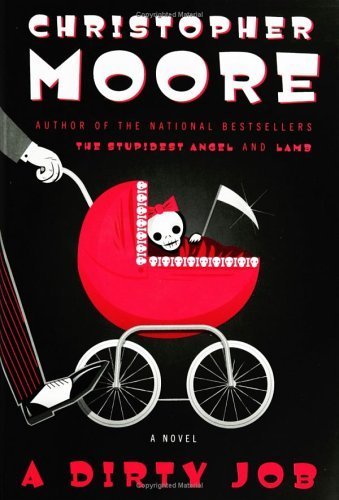
For a breath of fresh air, today we’ll discuss a comedic piece, Christopher Moore’s A Dirty Job. As much a humor writer as a horror writer, Moore (perhaps best known for Lamb: The Gospel According to Biff, Christ’s Childhood Pal) penned this 2006 tome in response to the passing of his parents.
The light-hearted result is the tale of Beta Male Charlie Asher, who wakes up one day to find himself a Grim Reaper (we learn that Death relies on independent contractors to keep up with demand).
Hijinks ensue when he must protect his daughter Sophie (who has two hellhounds for pets) from the forces of evil. This is a rib-tickling romp playing off of traditional horror themes, and another fine effort from Moore, whom one might consider the Tom Robbins of the horror realm.
He has a long history of blending horror tropes with hilarity, dating back to his 1992 debut, Practical Demonkeeping. For those who prefer vampires with wit as well as bite, try his trilogy of Bloodsucking Fiends, You Suck and Bite Me: A Love Story.
Parts of this post are adapted from an earlier article of mine, “Thirteen horrifying reads for Halloween,” which appeared in the Boulder Camera in 2008.


October 9, 2012
Unsettling Chapters: Invisible Monsters
A close cousin of horror is transgressive fiction. These are novels, often dark 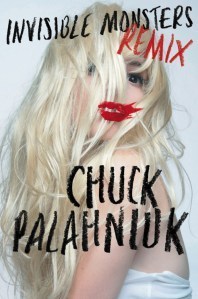 or dystopian, that break cultural taboos for the sake of social commentary and satire. Considered to be a working-class style of literature, classical examples of transgressive literature include the Marquis de Sade, George Bataille, some work by Dostoyevsky and the Beat writers. Contemporary examples include Bret Easton Ellis and Irvine Welsh. Currently, the definitive author of transgressive fiction is Chuck Palahniuk.
or dystopian, that break cultural taboos for the sake of social commentary and satire. Considered to be a working-class style of literature, classical examples of transgressive literature include the Marquis de Sade, George Bataille, some work by Dostoyevsky and the Beat writers. Contemporary examples include Bret Easton Ellis and Irvine Welsh. Currently, the definitive author of transgressive fiction is Chuck Palahniuk.
I have long admired Palahniuk’s writing, both for its satire and transgressive nature, and Invisible Monsters, one of his earliest works, is considered to be among his most disturbing and poignant. It’s an endless buffet of sexual disorientation, body modification, gender dysphoria, self-mutilation, fame-mongering, familial dysfunction, violence and manufactured reality.
But at its core, Invisible Monsters is about identity. Who determines one’s identity? Who defines who or what one is or is not? This can be sexual, biological, superficial. Identity is a personal, subjective thing. It’s also one that manifests physically. For these characters, mutilation is the method of self-expression, either by accident (Brandy), by gender reconstruction surgery (Evie) and by their own hand (the narrator, Shannon).
Palahniuk exaggerates these tropes to the degree that they become fabulistic, and because of that, he had difficulty getting the book published. At the time, Palahniuk was a bit of a mystery. Here’s a book that begins with a spinning shotgun and a room on fire, and it ends with… Well, time is a relative component of Invisible Monsters, so who the hell knows where it ends!
What we’ve learned of Palahniuk in the ensuing years is that his over-the-top approach is a monstrous distortion of our culture. In this way, he teaches us the value of the grotesque in satire. Shannon is a fashion model who intentionally disfigures herself, Brandy a homosexual who uses an accident as pretense for gender reassignment surgery. These are people who tear themselves apart, and the pieces don’t quite fit when put back together again.
In life, the deepest wounds are the ones that are self-inflicted, and it is the characters’ own hand that pours in the salt.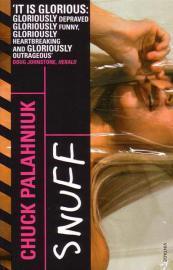
As if the novel wasn’t surreal enough already, this summer Palahniuk released an updated version of Invisible Monsters featuring new and rearranged chapters.
And if that’s not enough to help you reach your disturbance quota, check out his collection of loosely connected stories, Haunted, one of my favorites. Full of splatterpunk thrills, it’s a bloodbath worthy of the Grand Guignol.
His 2008 novel, Snuff, is another ick-inducing read, this time taking on the world of pornography. You can read my review of it here.





